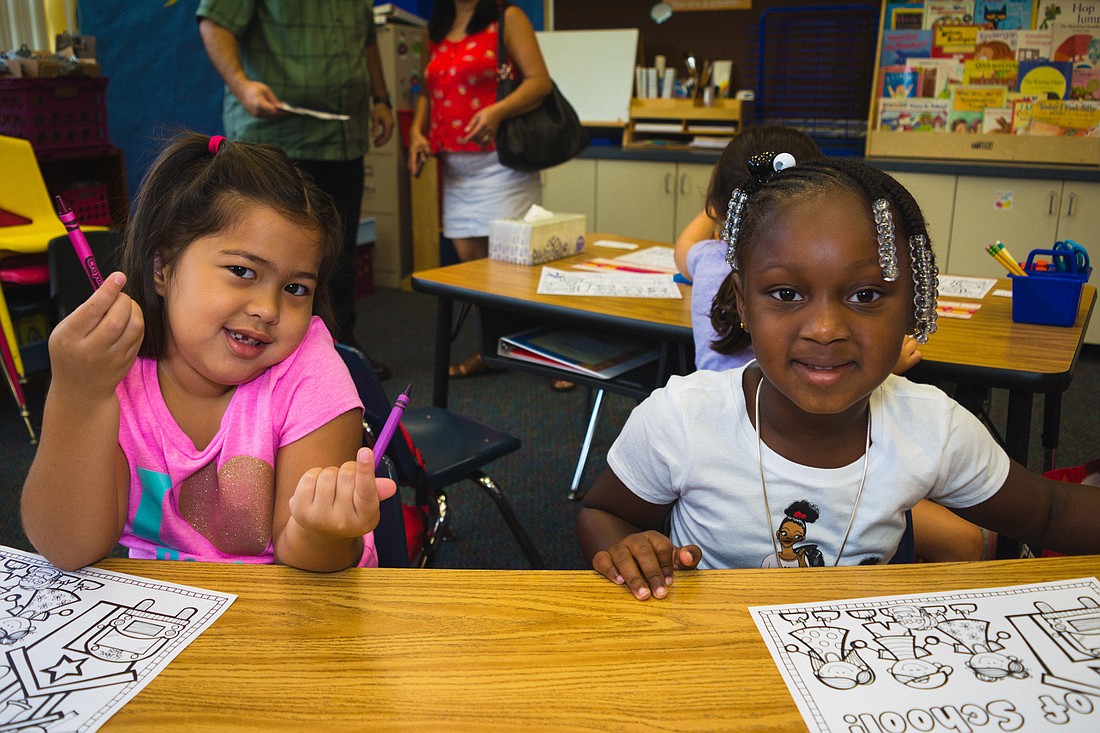- November 21, 2024
-
-
Loading

Loading

With schools opening Monday, many parents and teachers still find themselves questioning the safety of returning to in-person schooling.
Local health officials say that although a full spectrum of risks cannot be determined until schools do reopen, based on data and research from other schools across the globe, it is reasonably safe for students to return to Sarasota County Schools.
Drawing on Florida case data — people with a positive test — Dr. Sean Downing, who works in pediatrics and internal medicine, said that younger children are less likely to contract COVID-19.
According to data from the Centers for Disease Control and Prevention, out of 3.6 million charted national cases, 257,200 of them were among children ages 4-17, with approximately 77 deaths as of Aug. 1.
In Florida, there are 39,735 cases among children ages 0-17, with 436 hospitalizations and seven deaths as of Aug. 9. Of those positive pediatric cases, 466 have been in Sarasota County.
Although he acknowledged there will be an increase in numbers, Downing said it is safe for children to return to brick-and-mortar schools.
“For those who don’t have underlying risks, it is perfectly reasonable for them to return to school,” Downing said.
Infectious disease specialist Dr. Manuel Gordillo agreed, stating schools are “as essential as grocery stores.”
“There will not be a perfect time; there will just be a less bad time,” Gordillo said. “We do need to consider that kids need to go to school for other benefits as well.”
Students who are kept from in-person classes can miss out on important pillars of a healthy learning environment, such as socialization, critical services, occupational speech therapy and reliable meals, to name a few, Gordillo said.
Although both doctors agree that children contract COVID-19 less frequently, the reason why remains unclear. Both proposed several theories: Children have different immune systems than adults, they are exposed more to similar viruses, and they have less density in ACE2 receptors, which act as a doorway for the virus.
Additionally, children tend to show less severe symptoms.
Finally, Gordillo said studies from other countries show that children, typically between the ages of 1-10, did not transmit the disease at all or as much as older children and adults. Although the reason remains unclear, Gordillo said it could be because children are shorter, allowing droplets to fall to the ground quicker, and they have smaller mouths and quieter voices, which will keep droplets from projecting farther.
“The bottom line is, they do not transmit as much as older children or adults,” Gordillo said. “They do get sick, but when they do, the disease is much milder than other age groups.”
Although they said most children should return to school for the benefits it will provide, it is not a recommended choice for all children. Downing and Gordillo said children with risk factors or who live with people at risk should stay home.
“It’s not all or nothing in one way or the other,” Downing said. “We have to be sensible about what we are doing, but there are ways to mitigate risk, and we should take all the possible precautions and be sensible about the restrictions we put in place.”
Still, other counties throughout the state — including Miami-Dade, Palm Beach and Monroe counties — created plans that include a remote-only start.
Last month, Florida’s largest teachers’ union filed a lawsuit in an attempt to block the return to in-person classes. A Florida circuit judge sided Monday with the union, granting a temporary injunction against the state’s mandate that all Florida schools must open brick-and-mortar schools by Aug. 31.